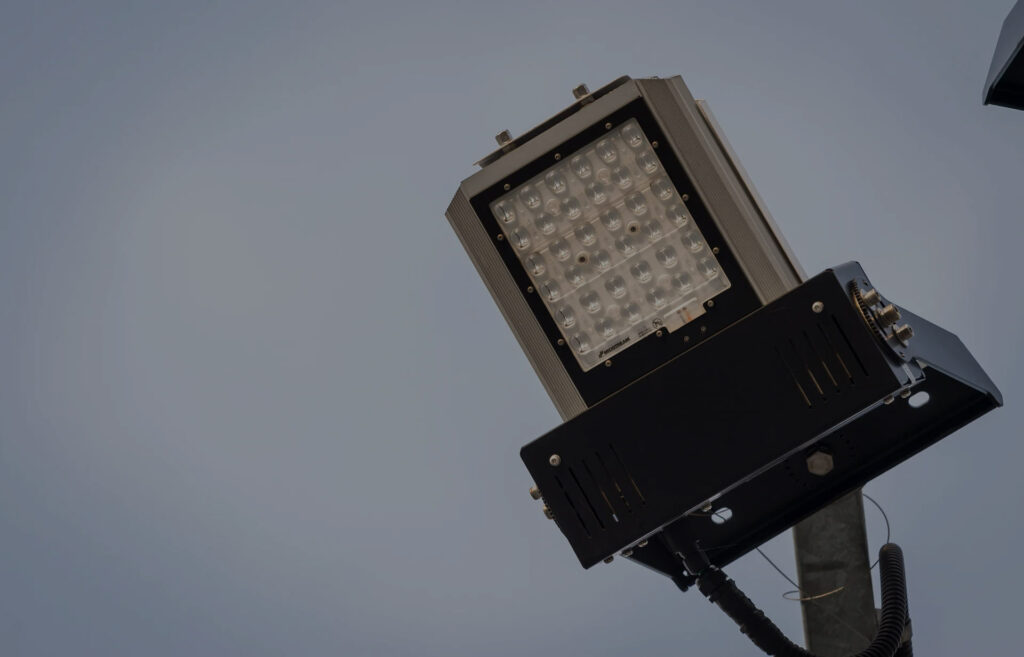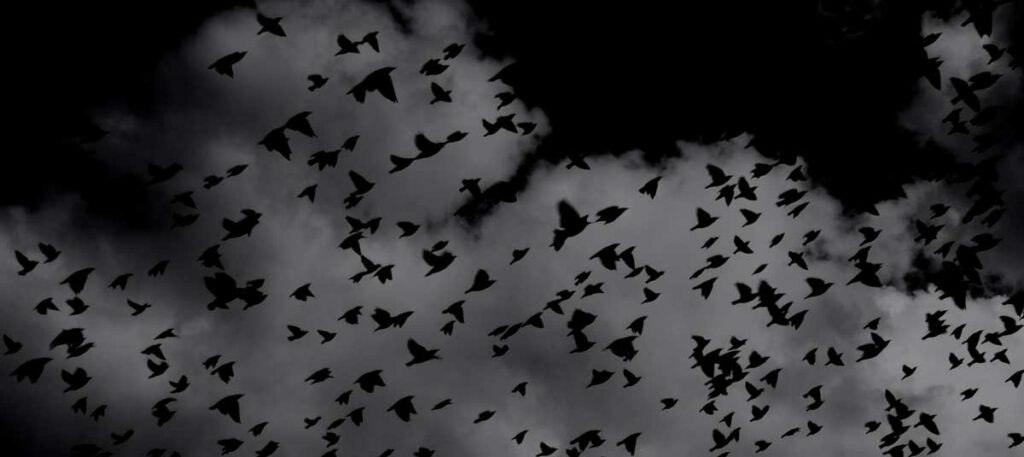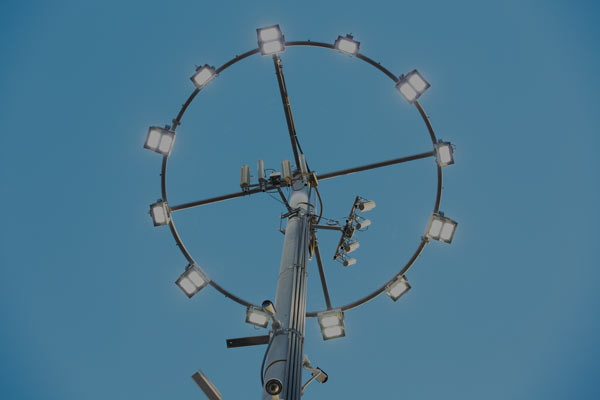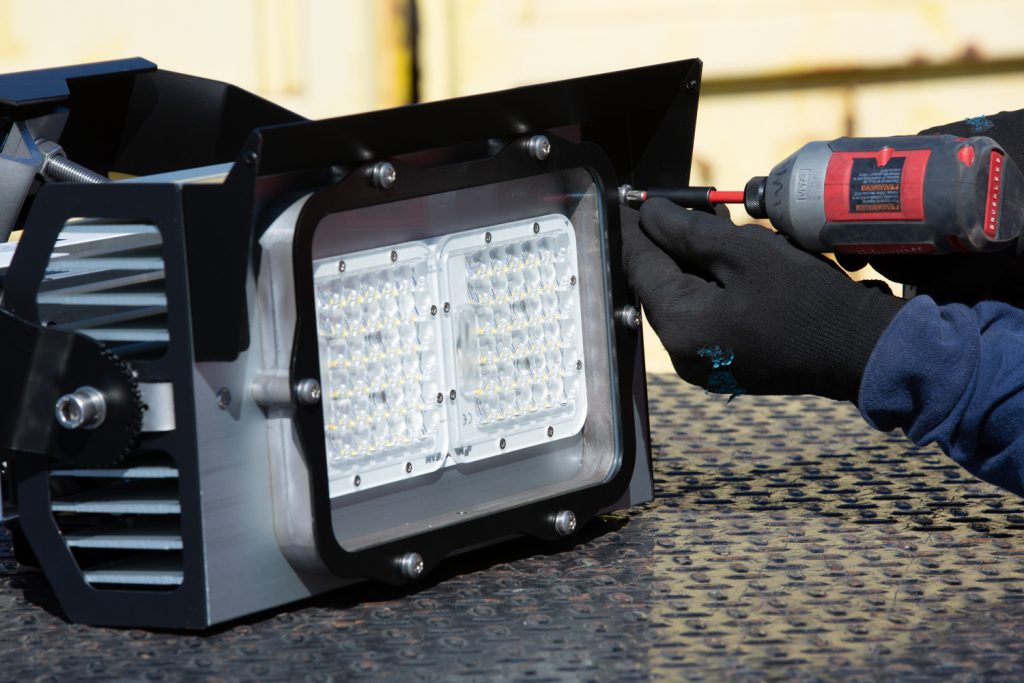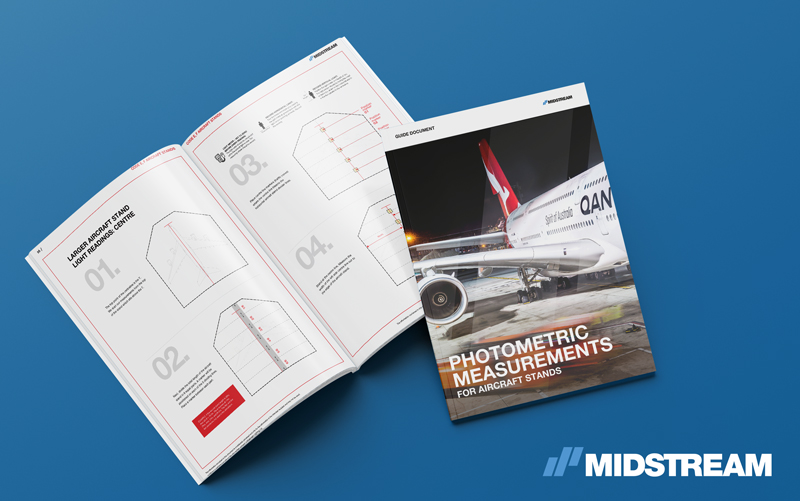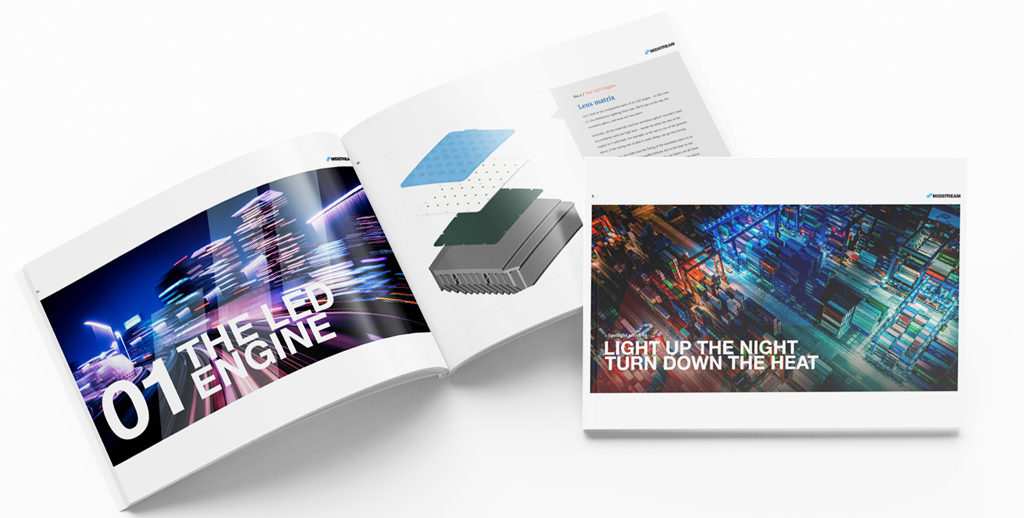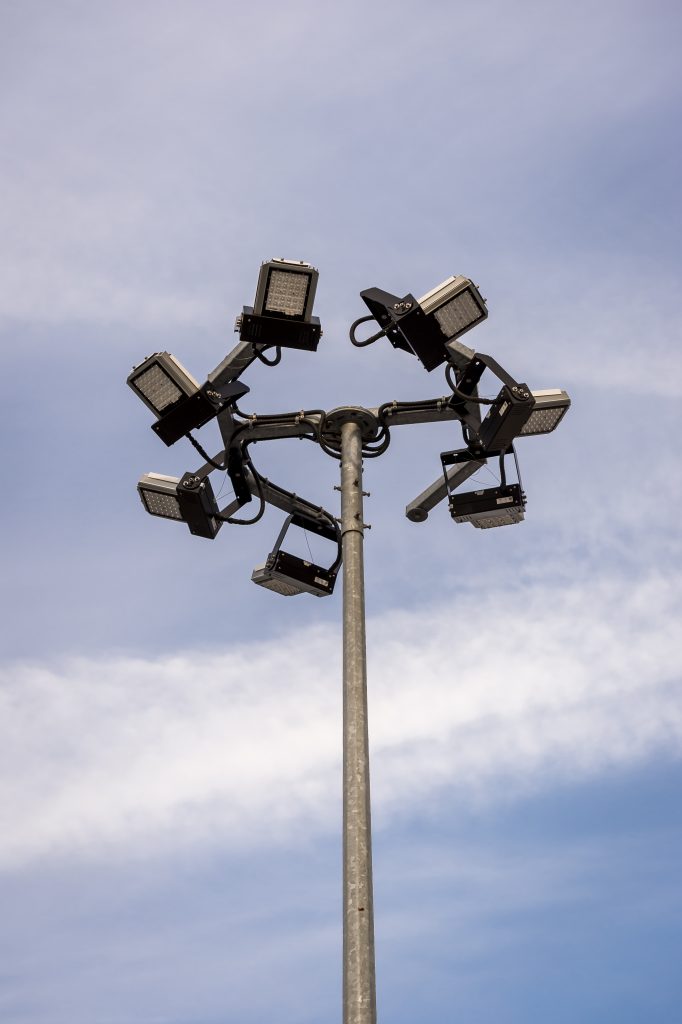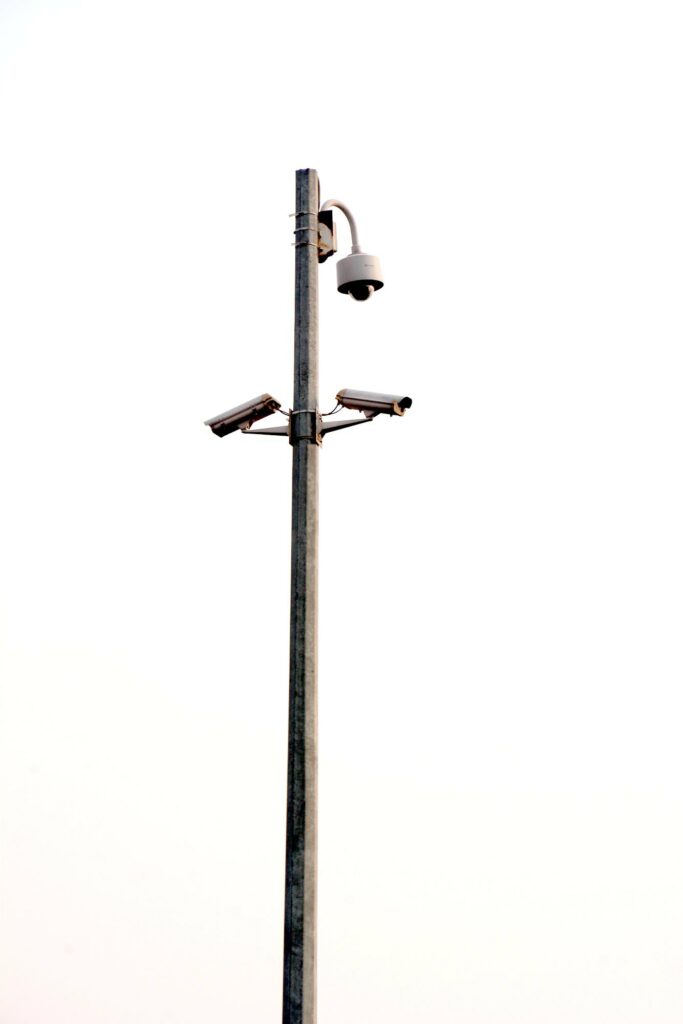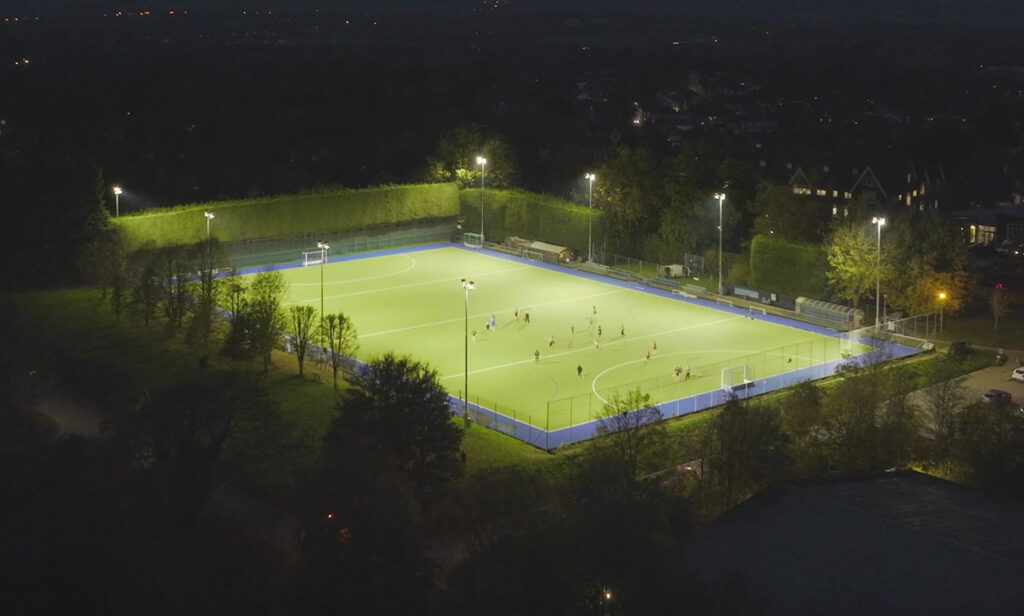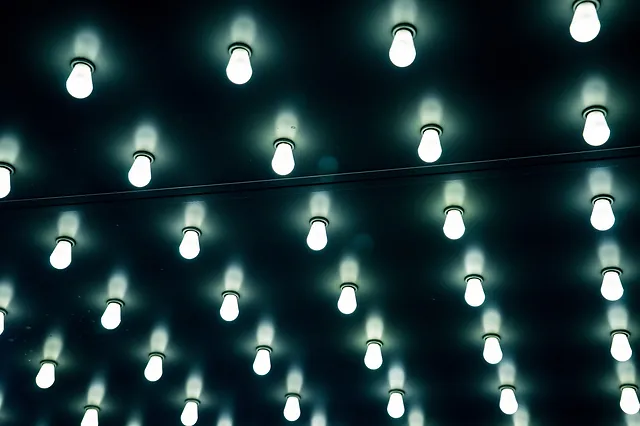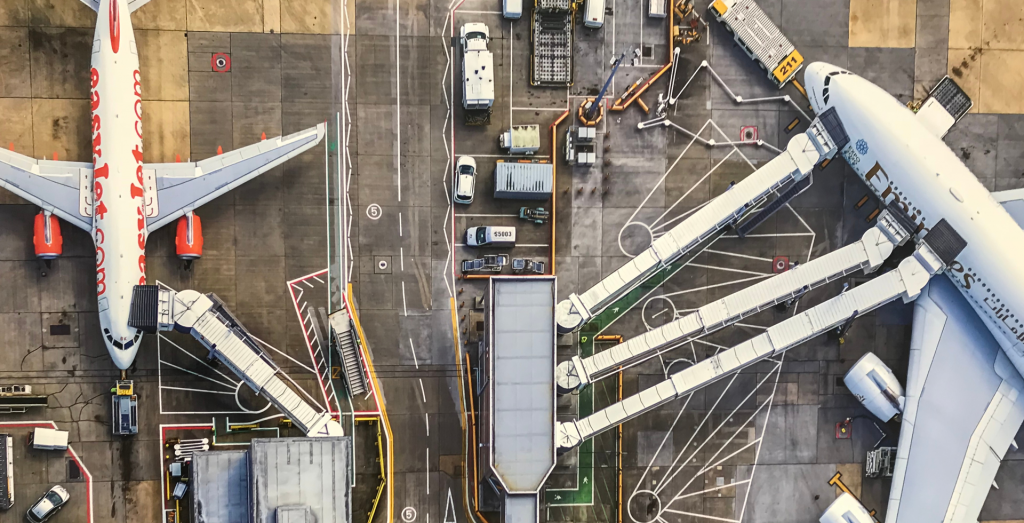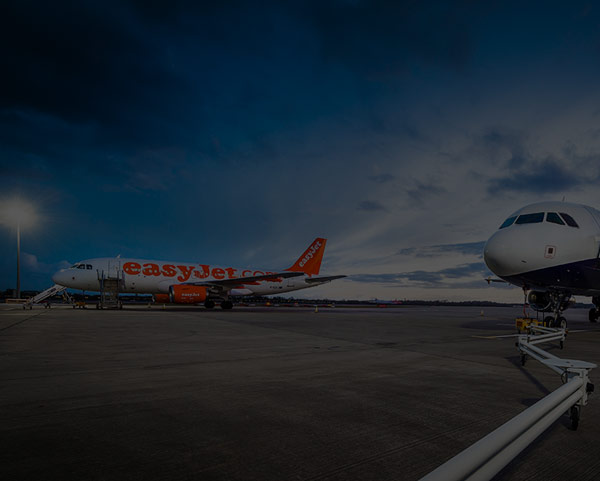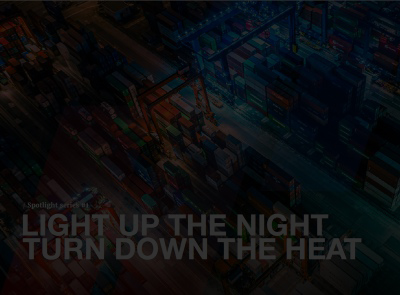Category: Aviation
In aviation, the future of sustainability demands tangible results
In just under a month, Midstream’s aviation team will be touching down in Dubai for the 21st annual Airport Show. And as we put the final touches on our plans, I’ve naturally been spending a lot of time thinking about the aviation sector as a whole.
Over the past decade, sustainability has become one of the biggest issues – and arguably the biggest – shaping the future of aviation. We’ve all seen the stories about the environmental impact of airports, and there’s no shortage of issues that the industry (rightly) needs to address. At the same time, I think there’s a real danger that the concept of sustainability is beginning to lose its impact due to the way in which it’s discussed.
Sustainable actions are a good thing, which is a statement that I think just about anyone can agree. But sustainability as a topic can also be quite vague, an all-encompassing theme that can cover everything from bio-diversity through to carbon emissions. As a result, it’s all too easy to think about sustainability as some monolithic challenge that will take years – if not decades – to address successfully.
The reality is very different. Everything we can do to mitigate the threat of climate change makes a difference, and the sooner we start doing it, the more impact it has. I think that this is where companies like Midstream have a real responsibility to their customers – not just in terms of our products, but in the way we communicate their benefits.
Rather than talking in vague terms about how we can help airports become more sustainable, we need to provide concrete facts that explain exactly what we can do. Your airport has a goal of being carbon neutral by 2040? Great, here are the real steps that we can take today that will help you start to move towards that goal.
Driving action through accuracy
As you can probably tell, the tangibility of product performance is something that we’re quite passionate about at Midstream. When we won the Sustainability category at the Inter Airport Europe Awards late last year, it was for the very specific fact that our Modus Tower Series lights can reduce typical energy consumption at airfields by as much as 70%. It’s hard numbers like those that I believe suppliers to the aviation sector need to commit to.
In Dubai, we’ll be showing two other products from our Modus line – the 450 and R1000 floodlights. Both have been specifically designed with the demands of aviation environments in mind, and are capable of delivering significant energy savings while simultaneously improving the quality of an airport’s lighting.
What does that mean? Simply that, when we sit down to talk about the contribution that we can make to an airport’s sustainability targets, we can be incredibly specific about the impact that we can deliver. Through our complimentary design service, we can say with an incredibly high degree of accuracy exactly how much we can help them reduce their energy consumption by, and how fast we can help them achieve net zero as a result.
If that sounds like the kind of discussion you’d like to have around sustainability – one that focuses on real actions, and real results – then we’d love to meet you in Dubai. Why not drop by our stand at 3002.
Impacting everything from regulatory compliance to passenger experience, apron lighting is something that airport operators need to know that they’re doing right. It’s also a taxing issue to address – one that’s rarely covered by training providers, and there’s little in the way of universal guidance or consistent methodologies to work from.
With this in mind, we thought apron lighting would be the perfect topic for our first Wednesday Webinar of 2022.
Midstream’s Yuli Grig (Commercial Director) and Marco Cavallotti (Project Manager) took attendees joining from across the world through an in-depth look at the current state of play, covering issues including current regulations, the protocols to follow when conducting an audit, and more.
The full recording is available to watch on our website, along with the presentation materials and accompanying Photometric Guide. If you’re looking for a quick summary, or a taster of the full content before diving in, we have you covered.
Here are five of Yuli and Marco’s top tips for apron lighting.
1. The ICAO provides clear guidance on standards, but be mindful of local legislation
Annex 14 of the International Civil Aviation Organization’s Aerodrome Design and Operations document provides operators with clear recommendations about the light levels that should be present on an apron. Horizontal illuminance should be 20 lux, with a uniformity ratio of no more than 4:1, and vertical illuminance at 20 lux two metres above the apron.
As helpful as these recommendations are, they are just that: recommendations. Specific legislation does also exist for different territories, and operators should ensure that their environment is compliant with local jurisdictions first and foremost. In North America, the guiding document is IES RP-37-15, airports in the EU should work to the Commission Regulation No 139/2014, and those in the UK must conform with the Civil Aviation Authority’s (CAA) CAP 168.
2. A little preparation can help to maximise the effectiveness of an audit
With tests needing to be taken at night, and on a clear stand, operators are understandably keen to ensure that a lighting audit can be completed as swiftly as possible. Nevertheless, measuring an apron’s lighting levels is a time consuming process – one that needs to be carried out properly to deliver accurate results.
Midstream’s own experiences here lead us to two recommendations. Firstly, the CAA’s approach of using 15 measuring points for small stands, and 25 for large ones, produces perfectly valid results. Secondly, operators should ensure that they secure the area that is going to be measured. Not only does that help from both a health and safety and efficiency perspective, it also ensures that shadows from planes and air bridges don’t interfere with readings.
3. Standards apply to illuminance grids, too
When measuring or designing a lighting solution, an illuminance grid is used to calculate two things: average overall illuminance, and the uniformity of illuminance in the working area, surrounding areas, and the periphery. Essentially, it helps to show how effective an operator’s lighting is across the entire area being audited – in this case, the apron.
As with lighting levels, illuminance grids also follow certain standards. In the EU, these are laid out in document BS EN 12464-1:2021 – a European Standard that governs the lighting of indoor and outdoor work environments. While EN 12464 does offer clear guidance on the dimensions and ratios that should be used, this is an area in which any qualified lighting provider should be able to offer their expertise.
4. Some basic rules should be followed when taking readings
Simple – but nonetheless important – differences need to be taken into account when switching between horizontal and vertical light readings. For horizontal readings, the lux meter should be placed flat on the ground – or, 0m above the apron from a technical standpoint. The notable exception here is at military sites, where it is sometimes recommended to take horizontal readings at 2m above the apron.
Two metres is also the recommend height for vertical readings in both commercial and military environments. As a result, a tripod should be used to ensure that the meter remains stable while readings are taken. One other consideration here is that the lux meter should be left for around five seconds before taking a reading, to ensure that it gives an accurate measurement. Be sure not to cast a shadow on the receptor, too.
5. Common mistakes can be easily avoided once you’re aware of them
Even simple mistakes when measuring light levels can have a big impact on the effectiveness of the final design. As a result, it’s crucial to ensure that the readings given are accurate. A few basic things to watch out for here include:
- Measuring an apron area that includes multiple stands. Standards require that each stand is measured individually.
- Confusing “minimum” and “minimum average” levels. These are different things, and requirements are based upon the latter value.
- Ignoring uniformity values. A stand may pass based on its average illuminance values, only to fail when assessed for uniformity.
For more on all of the above, as well as detailed guidance on where and how to take light readings and how to select the correct stand category, check out the full recording below.
Extreme temperatures of any kind can have a debilitating impact on the aviation industry. While aircraft are built to withstand deep cold, for instance, the same isn’t always true of ground operations. Refuelling, repairs, lading, and – ironically – de-icing can all take much longer than they would in more clement conditions.
Sub-zero situations aren’t the only cause for concern, however. High heat can be equally disruptive, particularly in terms of air density; the hotter the weather, the “less” air there is and the harder it is for an aircraft to get the lift it needs for takeoff. While that’s primarily a problem for airports that are subject to extreme heat on a regular basis, it can also be an issue for those with short runways as well.
This being the Midstream blog, it probably won’t come as a surprise that high temperatures have implications in terms of airport lighting, too. Extreme heat can cause lumens to deprecate faster than they should, significant colour shifts to occur, and – in worst-case scenarios – LEDs to fail completely. And without the right protections in place, this can all happen within just a few months.
Over the past decade, we’ve delivered a number of apron lighting solutions to airports around the world, many of them in locations where temperatures regularly exceed what could be considered as “normal”. As a result, we’ve learned a lot about how to mitigate the effects of heat through smart lighting design. Here are five key issues that airport operators need to be sure that their lighting vendor can deliver on.
1. Metal core PCBs are essential
PCBs – or Printed Circuit Boards – are where the LED chips are mounted within a floodlight. PCBs can be made of different materials, and that choice can have a dramatic impact on heat dissipation. Fibreglass (FR4) PCBs, for example, can handle only a fraction of the heat that aluminium equivalents can, for instance. That’s why Midstream uses aluminium or copper in all of its PCBs. If your airport operates in a high-temp area, specifying the need for a metal core PCB in a tender is a crucial first step.
2. Thermal continuity helps to prevent failure
Between the PCB and the heat sink needs to sit what’s known as a “thermal gap interface filler”. This filler connects those units together, and ensures that there aren’t any pockets of air in which heat can build up. This might take the form of a paste, pad, or any other phase changing material, but whatever it is, it needs to up to the task; at Midstream, we use aerospace-grade components for our fillers.
3. Encourage air flow
Away from the PCB, air flow is something to be encouraged. If an LED ends up being completely enclosed, air can’t circulate and the entire purpose of the heat sink is undermined. Here, we focus on designing luminaires that have the greatest number of entry points for air, without compromising the unit’s overall integrity. To do this, we use Ingress Protected (IP) components inside the compartment itself.
4. Paint it white!
Protecting against heat isn’t just about what you do inside the LED. Because white paint reflects sunlight, it can also help to reduce the temperature of a luminaire – by as much as 50°C in some instances. That’s why we use white paint specifically on our LED bodies. Furthermore, we also install solar covers onto our heat sinks. These create a layer between the sun and the heat sink, ensuring that the latter isn’t compromised by solar heat.
5. Test in an accurate environment
In-situ tests can be used to calculate what is known as a TM21 projection. TM21s give manufacturers a clear idea of the lifetime and lumen deprecation of their products, and helps the end user understand the “maintenance factor” – the loss of light that occurs over time. What’s critical here is that any tests are conducted in an environment that reflects the highest possible temperatures, i.e. the middle of the summer.
On the current climate trajectory, extreme heat is only going to become more of an issue as the years go by. In Phoenix, Arizona for instance, temperatures were at or in excess of 110°F on 34 days in 2020 – a new all-time record . That’s a problem, not least because airline operational manuals don’t even include guidance for temperatures above 118° . As this trend continues, airports need to be ready for the impact on infrastructure, as well as fleet.
To find out more about how to ensure that your lighting remains operational in high heat, why not check out download our white paper below discussing the issue? And to learn more about Midstream’s commitment to tackling the cause of extreme conditions, read more about why we’re proud to have signed The Climate Pledge here.
How airports can tackle their biggest lighting challenges in 2022
With passenger volumes continuing to make a steady recovery, many in the airport industry will be starting to look forward to what will hopefully be a better year ahead.
While it might not be at the very top of the priority list, apron lighting will undoubtedly be an area of focus for some. As sustainability initiatives become more widespread, and airports continue to look for ways to rebalance costs following a disruptive few years, a fresh approach to lighting offers the chance to make significant progress in both areas at once.
For those who do want to look again at their lighting, one of the first challenges they may face will be in ascertaining how effective their current setup is. The situation might be much better than it was 10 years ago, but many airports still don’t have a clear view of the quality of their existing lighting system. Surveys tend to be conducted relatively infrequently, and the complexity involved means that even when they are, the results don’t always provide an accurate reflection.
That’s a significant problem, because it leaves airports without a clear idea as to whether their lighting setup conforms with ICAO and EASA/FAA standards. Though that might not result in a fine, as it could in other sectors, it does mean that non-compliant stands will end up being limited to use during daylight hours only – something that can be hugely damaging in terms of operational efficiency.
A quick guide to apron lighting
One thing that may help here is Midstream’s own Photometric Measurement guide. It doesn’t avoid the need for airports to undergo a lighting audit, but this free document does provide a step-by-step process which they can follow to test their compliance.
Tackling the infrastructure gap
For those airports that do want to improve the quality of their apron lighting, retrofit solutions can be a cost-effective option. But these too can pose their own challenges, particularly when mast infrastructure hasn’t kept pace with expansion elsewhere.
At many airports, the original lighting masts will have been installed during the 1970s or 1980s. A few may have been added along the way, but usually at a slower rate than new stands. It’s therefore not uncommon for an airport that had three masts and five stands in 1980 to now have six masts split across 15 stands, for instance.
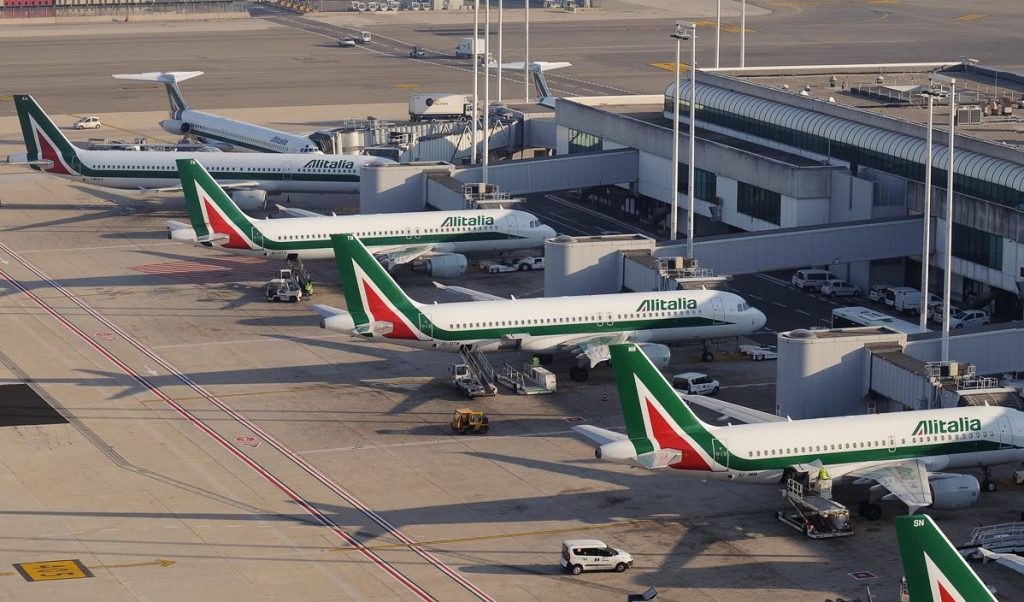
That kind of disparity makes compliance very difficult. New regulations state that every stand now requires lighting from two different directions, something that is mathematically impossible in a scenario like the one described above. Rome Fiumicino provides a great example of what is actually needed in a situation like this; a complete overhaul of the mast infrastructure, resulting in an incredibly well-lit airport and huge energy savings in the process.
While reducing the amount of energy used is obviously helpful from a budgetary perspective, innovations in mast technology can also have a major impact on cost. Midstream’s Modus R1000, for instance, utilises a lightweight luminaire and a series of high-performance, asymmetric optic lenses. This, combined with a remote driver configuration, means that the height of the mast can be vastly reduced – resulting in a cost saving of around 70% over traditional models.
Time to act?
While passenger volumes have shown a strong recovery over recent months, they remain low in comparison to pre-pandemic years. As a result, it can be tempting to assume that apron lighting is something that airports can push further down the to-do list. For those who want to improve their bottom line, however, that isn’t really the case.
In our own experiences, many of the airports that have invested in a new lighting system over the past two years have saved a considerable amount of energy by doing so. While airports locked into old sodium-based systems have needed to leave apron lighting running no matter how many flights are departing, those with LED solutions have been able to power them on and off as needed. With the maintenance costs on those old systems also continuing to increase, waiting for business as usual to resume can actually be a false economy.
The payback time on new systems is also getting shorter by the day. Whether it’s a retrofit solution or a completely new installation, an LED lighting system typically starts to deliver a return on investment within two to five years. Even making the switch from first-generation (c. 2011) LED floodlights to next generation ones can offer significant savings.
The main priority, of course, is to get the advice of a company that specialises in the very specific requirements of modern apron lighting. As well as manufacturing our own series of award-winning aviation floodlight solutions, Midstream also offers a complimentary design and consultancy service covering everything from light levels to wingtip clearance.
The 2021 United Nations Climate Change Conference – better known as COP26 – is now underway. All eyes are on host city Glasgow as delegates gather to discuss the urgent action needed to mitigate the increasingly devastating impact of climate change.
Six years on from the Paris Agreement, COP26 has been billed as “the world’s best last chance to get runaway climate change under control .” Aiming to secure a global commitment to issues including carbon net-zero by 2050, the restoration of natural ecosystems, and at least $100bn in climate finance per year, the events that play out this November will shape not only the next decade, but the long-term future of the planet as a whole.
As a lighting company, environmental responsibility is something that we’re acutely aware of here at Midstream. Lighting accounts for 5% of CO2 emissions globally, with a large amount of that generated purely by the use of inefficient and outdated technologies – incandescent or halogen bulbs in a home or office environment, and high-pressure sodium (HPS), metal halide, and fluorescent lighting outside.
The environmental impact of lighting is one of the primary reasons that Midstream has always used light emitting diode (LED) technologies. LEDs have been at the heart of our products since day one, offering significant benefits for both our customers and the planet. The energy saving capabilities of LEDs are such that, if the entire world switched to them, we could save around 1.4bn tonnes of CO2 – a figure that would make a huge contribution to those targets outlined in Paris .
Numbers in the billions are difficult to comprehend, of course, as is change that requires the entire world to take action overnight. Results from some of the projects that Midstream has delivered, on the other hand, tell a much more relatable story.
- At Gatwick Airport in the UK, we reduced energy consumption by 40% with our Titan Series floodlights.
- At Rome Fiumicino Airport, we delivered energy savings of more than 60% – removing 250 lights while improving performance in the process.
- And at the Port of Venice, we reduced the amount of energy used by 70%.
Another project of ours – with equally impressive energy saving results – will be on show for many of the COP delegates as they land in Scotland. Glasgow Airport, Scotland’s largest long-haul airport, have been leading transformational change and sustainability for the past 10 years.
Glasgow Airport came to Midstream Lighting ahead of the 2014 Commonwealth Games, which being hosted in Glasgow. Their challenge was to upgrade their apron lighting, meet CAP 168 compliance standards, and reduce their energy consumption.
After a complete review of Glasgow Airport’s lighting facilities, we put our Design Team on the case. The solution they came up with was to upgrade all high-pressure sodium apron lighting to our flagship Titan Series LED Floodlight.
We believe this has made Glasgow the first airport in the world to have a fully LED-lit apron in full compliance with the requirements of ICAO. The new apron lighting system significantly reduced Glasgow Airport’s energy consumption (60% reduction), while streamlining operations and improving safety with enhanced coverage, reduced glare and increased lighting levels, just in time for the 2014 Commonwealth Games. Added to that, the airport is now safer for staff and passengers, it’s more secure, and with less downtime runs more smoothly.
However, in 2021, Glasgow Airport has engaged Midstream again, eight years on, to upgrade the first-generation LED floodlights with the latest generation; creating further energy savings and lighting improvements in time for the COP26 Conference. The old lights will be recycled, giving a real-life case of the circular economy in action. Midstream is proud to continue supporting Glasgow Airport in being a true leader in the fight against climate change through energy reduction and sustainable business practise.
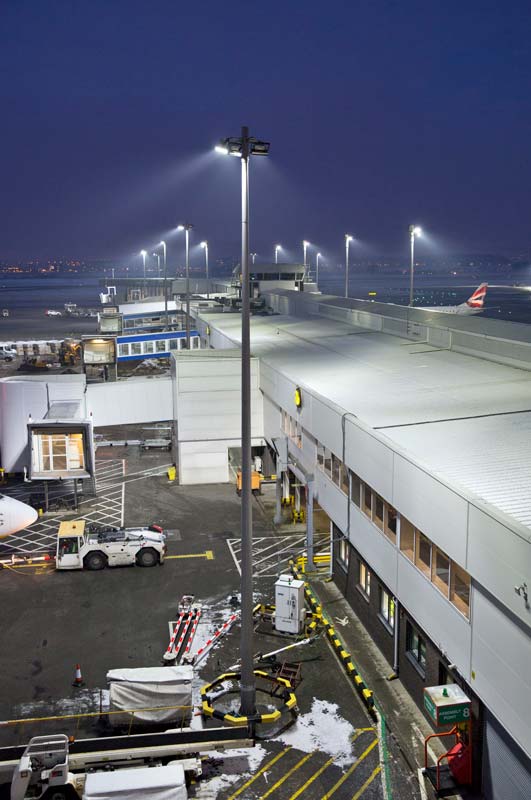
The work that we do for airports is particularly important considering the need to balance efficiency with effectiveness. As is the case in any industrial environment, lighting plays a key role in visibility and safety at airports, so performance is paramount. Our Lighting Design Team has spent countless hours optimising the performance of our aviation products, ensuring that they maximise light levels while minimising the amount of energy required to do so.
One of those products, the Mobile Tower Series, won the “Sustainability” category at the inter airport Europe 2021 Innovation Awards held earlier this month. With the Mobile Tower’s LEDs capable of reducing typical energy consumption by as much as 70%, the unit serves to prove that it’s possible to maintain – and in many cases, improve – lighting quality while still reducing energy usage and carbon emissions.
While we embed sustainability into all of our products, Midstream’s commitment to the environment doesn’t end there. In September this year, we signed The Climate Pledge – an international programme that encourages businesses to achieve net-zero in 2040, 10 years before the Paris Agreement specifies. At the time of writing, Midstream is one of just over 200 companies to have signed the pledge, joining the likes of Salesforce, Proctor & Gamble, Visa, Heineken, and more.
We’re excited about where The Climate Pledge will take us – not only in terms of our own contribution, but the experiences and learnings that we can share with our customers as they make their own organisations greener and more sustainable too.
Join Midstream Lighting at Inter Airport Europe from 9th to 12th November to experience the future of airfield lighting with Midstream’s latest product innovations, live demonstrations and an opportunity to discuss your projects with our design team. We will be on stand 1518 in hall B5.
More of our Aviation blogs you may like.
To find out more about high—power LED lighting and high heat environments and to help you understand the issues you could face and how to avoid them you can download Midstream’s white paper for FREE here
So what is it?
One example of light pollution is skyglow. This type of light pollution comes about because things like street and building lights aren’t aimed just where they’re needed. Instead, a large proportion of their output goes directly, or is reflected, upwards and is scattered by the atmosphere – this virtually obscures anything above it such as the Milky Way and stars.
How we work to avoid skyglow:
- All our lighting designs and installations seek to minimise this type of light pollution as much as possible. They never direct light straight to the sky – it would be a total ‘waste’ and compromise what we’re trying to achieve. So, all our products have shields that prevent this.
- Our luminaires, with their proprietary lenses, are also designed to produce an even light, just where it’s needed, rather than an intense light in one area that would cause greater reflection up to the sky and add to skyglow.
As well as skyglow there are three other main types of recognised light pollution. These are:
- Glare – excessive brightness that causes visual discomfort.
- Light spill – light falling where it’s not intended, needed or wanted.
- Clutter – bright, confusing, and excessive groupings of light sources.
You’ve probably experienced these on a personal level. The dazzle of an oncoming car’s headlights – glare. A neighbour’s garden security lighting shining in your home – spill. If you’re standing in somewhere like the middle of Times Square or Piccadilly Circus– clutter.
They can all happen with industrial lighting too. So in the rest of this short blog, we’ll focus on just these aspects, and what we as an environmentally aware, specialist lighting company do to combat them,
Industrial lighting glare:
Just the same as a car’s headlight glare can cause safety issues, industrial glare can too. Poorly configured aviation apron lighting produces significant safety problems for staff and passengers on the ground, and pilots in their planes. It’s the same for ports and maritime terminal lighting. If high mast crane lighting isn’t properly aimed, with the right shielding also in place, those working on the ground and the crane operators themselves can be affected by harsh glare and safety can be compromised. Glare can also be a problem with sports lighting – for the players, spectators, and broadcasters.
Our lighting Design and Engineering teams have years of experience in creating lighting solutions for airports, ports, and sporting venues. We’ve completed over 100 global airport projects and are the leading supplier of LED lighting systems for airport aprons. We’re also the preferred supplier to many of the world’s busiest and biggest port and terminal operators. We’re a leading sports lighting supplier too. So, we know more than anyone about how to create lighting solutions that minimise the risks of glare – in all applications and environments around the world.
How we prevent glare:
- Our luminaires have been specially designed with glare in mind. Our Titan Series, one of our flagship products, is manufactured with our propriety optics which deliver maximum light levels on very precise designated areas. Plus, its asymmetric floodlighting provides an excellent solution for low glare applications. Our Modus R Series for sports venues has been designed to ensure low-glare, broadcast-ready, flicker-free lighting too.
- We test, test, and test again. When we start a project – new build or retrofit – one of the very first things we do is to test our designs on paper to see where glare may be an issue. We then test our proposed designs using things like DIAlux software to make sure they’ll reduce any glare to an absolute minimum. We don’t stop there. Before we install a lighting system we test for any glare in-situ – at the points where it could make an impact. For example, at airports we make observation tests not just at ground level but also at the various heights pilots would be depending on the type of plane.
- All our lighting installations and products are also designed to be as ‘future-proofed’ as possible. This means, for example, that if changes to the layout of an airport are needed we can easily add extra luminaires to allow for these changes without causing any increase in glare.
Industrial lighting spill:
This is less of a problem when it comes to airports and ports, as they’re usually situated away from urban areas. Sports venues, however, such as soccer grounds, are often found in the middle of cities and close to people’s homes. Poorly designed or installed venue lighting can spill a lot of harsh light – during matches and evening training. Just imagine what this would mean for you if it were shining in your bedroom when you needed to be at work early the next day.
Midstream light spill solutions:
- Here again, our designers and engineers know exactly what to look for before they even put pen to paper.
- Our Modus S Series, for sports applications, has been designed with specialty light shields to provide high uniformity as well as to specifically reduce light spill to provide an ideal solution for venues in urban areas.
- We’re also experts when it comes to national and local lighting planning regulations. So we know:
- Exactly what regulations need to be complied with.
- When any additional planning permission is needed.
- How to stay compliant if any things change later down the line.
Industrial lighting clutter:
This can be a problem almost anywhere if the lighting design is poor and too many light sources are involved. Let’s think again about somewhere like Times Square. Each of the illuminated advertising billboards is vying for your attention. To make their advert stand out, advertisers will ramp up their lighting to the maximum. Other advertisers then follow suit. The results in an excessive grouping of lights that can be hard to distinguish and can be confusing. Light clutter often causes glare issues and also adds to skyglow pollution.
An example of light clutter in an industrial setting can be found in port and terminal layouts. If a port’s lighting system were made up of a close series of lamppost high mast around the entire area with each holding a lamp that’s always lit and directs light straight in front it would produce light clutter. The same can be seen on poorly designed motorways, especially on their slip roads.
How we stop light clutter:
- On the whole, our lighting solutions are housed on high masts – especially in ports and terminals. This helps prevent clutter from reaching anyone at lower levels – such as the road or the deck of a ship.
- Also, even when they’re all on the same mast, our lights are positioned so as to not ‘compete’ with each other. Our lighting designs aim each luminaire slightly differently to create a uniform level of light across an entire area – thus avoiding clutter.
A quick summary of just some other environmental benefits LED lighting provides compared to traditional lighting
- They’re much more efficient – they use much less electricity, so far less global warming CO2 is produced to run them.
- They give a better quality of light and its distribution – so a lot fewer lamps are needed to cover the same area. This means less need to be produced which leads to environmental savings across the whole production to distribution chain.
- As they last much longer, not as many need to be produced – giving the same environmental saving as above.
- They can be controlled very easily and work with things like motion sensors. So, for example, if an area of a port wasn’t being used it can be left unlit and the lights only come on when someone is in that area. They’re also dimmable. Both of these can produce big energy and environmental savings that can’t be achieved with traditional lighting which can’t be dimmed or come on instantly.
- Traditional lighting can contain environmentally harmful, toxic elements – these aren’t found in LED lights.
Are the ICAO (International Civil Aviation Organization) standards mandatory?
The ICAO publishes a list of recommendations and not compulsory rules. These recommendations, however, are adopted by local governing national bodies that can convert them into legal requirements. These governing bodies are typically known as ‘Competent Authorities’ (CA) and would usually be a country’s Civil Aviation Authority or their Health & Safety or Standards agencies. As these legal requirements are the responsibility of the local CA, it can choose to exceed any minimum ICAO recommendations if it wishes.
- In the USA, the legal requirements guiding document is Illuminating Engineering Society of North America’s IES RP-37.
- In the UK, it’s the Civil Aviation Authority’s CAP168.
- In Europe, this is covered by European Union Aviation Safety Agency’s EASA CS ADR – DSN.M.750.
- In Australia, it’s the Civil Aviation Safety Authority’s MOS139.
For other examples and to discuss specific national or international requirements, please contact us.
What are the ICAO Standards for apron floodlighting?
These standards can be found in Annex 14 to the Convention on International Civil Aviation
Aerodromes, Volume I, Aerodrome Design and Operations, Eighth Edition, July 2018.
It recommends the Average Illuminance should be at least the following:
- For aircraft stands:
- A horizontal illuminance — 20 Lux with a uniformity ratio (average to minimum) of not more than 4 to 1.
- A vertical illuminance — 20 Lux at a height of 2m above the apron in relevant directions.
- For other apron areas:
- A horizontal illuminance — 50 percent of the average illuminance on the aircraft stands with a Uniformity Ratio (average to minimum) of not more than 4 to 1
Should we measure the entire apron or just the aircraft stands individually?
Each aircraft stand needs to be measured independently to guarantee compliance with the requirements because they specifically refer to aircraft stands.
Should we design our lighting system and take measurements for only the largest aircraft type in a MARS (Multiple Apron Ramp System) stand?
For a MARS stand, that may have several aircraft types using it, you need to design it and take measurements for each type of stand within the MARS stand individually.
Should we primarily be concerned with the average lux levels?
Although the requirements call for an Average Illuminance, the minimum levels are also important as they form part of the Uniformity Ratio calculations. The Uniformity Ratio is equally important but is often overlooked during light levels checks. Always make sure the design and actual levels comply with both the Average Illuminance and the Uniformity.
Should I measure the apron with an aircraft parked on it or clean and clear?
Although it doesn’t expressly say so in the recommendations, it wouldn’t be practical or safe to measure the levels with an aircraft on the stand. So, the stand must be clean and clear when any measurements are taken. The design process should also be done without an aircraft on the stand. However, designers may choose to add a model of the aircraft to show the effect of shadowing.
Do I need any special equipment to measure the apron lighting levels?
Yes. You’ll need the following when you’re measuring the apron lighting levels:
- A LED calibrated light meter.
- Either a measuring wheel/stick – to measure the distance between the measuring locations.
- Objects to be used as a marker i.e. traffic cones.
- A photometric results sheet to keep clear records of the measured lux levels.
The light meter, or lux meter as it’s also known, is a very sensitive device. So we recommend:
- You chose a reputable manufacturer’s lux meter – typically with an f1’ value better than 3%.
- Special care is taken to make sure the lux meter is suitable for the application and calibrated within 12 months of usage. This is because the standard calibration of lux meters is made with the CIE Illuminant A (2856K incandescent source) whereas LEDs have a very different spectral response, most commonly with a strong blue peak.
- You remember to select the correct measuring scale before it’s used.
If you’d like any help choosing a lux meter, or how to use it, just let us know
Would the process be different for a Code C stand compared to a Code F stand?
Yes. A Code F stand is so much bigger than the Code C stand, the same approach wouldn’t work. A higher number of measuring points are needed to give more accurate results for larger-sized stands. You’ll find more details about this in our Photometric Guide >
Is glare covered by ICAO Annex 14?
ICAO Annex 14 doesn’t prescribe the specific glare levels that should be adhered to. It does make the following recommendation though:
- Apron floodlights should be located to give adequate illumination on all apron service areas, with a minimum of glare to pilots of aircraft in flight and on the ground, aerodrome and apron controllers, and personnel on the apron. The arrangement and aiming of floodlights should mean an aircraft stand receives light from two or more directions to minimize shadows.
The European Normative EN 12464-2:2014 Light and lighting — Lighting of workplaces Part 2: Outdoor work places Table 5.2 — Airports is generally used to prescribe the Glare Rating limits (RGL) which should be below 50.
When designing apron floodlighting, as well as following the recommendation that an aircraft receives light from at least two directions it also applies to the final aircraft stands on either side of an apron area.
Should we consider the taxiways or routing lanes as “other apron areas”? Is glare covered by ICAO Annex 14?
No. They’re very different and their definitions explicitly exclude each other.
An apron is a defined area of land at an airport used for the safe loading and unloading of passengers, mail, cargo. It’s also used for safely fuelling, parking, and maintenance. All of which should happen without interfering with the airport’s traffic. None of these things happen on a taxiway, so they don’t fall under ‘other apron areas’.
Taxiways are included in the definition of Manoeuvring Areas – the part of an airport used for take-off and landing of aircraft, excluding aprons.
The definition of a taxiway is: a specific path at an airport used for the taxiing aircraft that provides a link between one part of an airport and another. This includes:
- The aircraft stand taxi lane – an area of an apron designated as a taxiway and used to provide access to aircraft stands only.
- The apron taxiway – a part of a taxiway system found on an apron that gives a taxi-route across the apron.
- The rapid exit taxiway – a taxiway connected to a runway at an acute angle and designed to allow landing airplanes to turn off at higher speeds than are achieved on other exit taxiways to minimizing runway occupancy times.
It’s worth noting too that the ICAO’s DOC 1957 Aerodrome Design Manual Chapter 13, Apron Floodlighting states that “On taxiways adjacent to aircraft stands, a lower illuminance is desirable in order to provide a gradual transition to the higher illuminance on the aircraft stands.”

